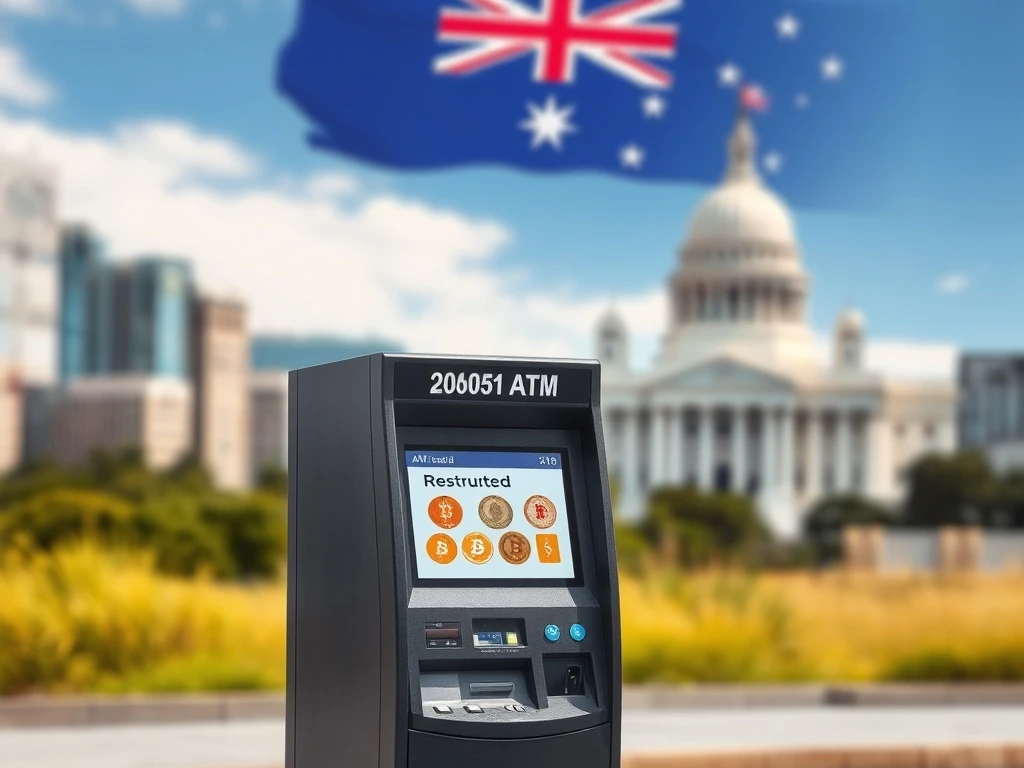Australia Crypto ATM Ban: Vigilant Regulators Propose Crucial New Powers

The cryptocurrency landscape in Australia faces a pivotal moment. New legislative proposals could significantly alter how digital assets interact with traditional finance. Specifically, the potential for an Australia crypto ATM ban looms. This development could reshape access to digital currencies across the nation. Stakeholders across the industry are closely watching these critical discussions. This article delves into the proposed changes and their potential ramifications.
AUSTRAC Crypto Regulation: Addressing Emerging Risks
Australia’s national financial intelligence agency, AUSTRAC, stands poised to gain unprecedented powers. Minister for Cybersecurity and Home Affairs, Tony Burke, recently announced draft legislation. This new law would empower AUSTRAC to restrict or even prohibit ‘high-risk products.’ Crypto ATMs fall directly into this category. Burke highlighted significant concerns over illicit funds. Authorities currently face challenges in policing and tracing these transactions. This makes crypto ATMs a notable money laundering risk. Consequently, enhanced AUSTRAC crypto regulation becomes essential. The government seeks to provide AUSTRAC with the necessary tools to combat financial crime effectively.
The Rapid Rise of Crypto ATMs in Australia
Australia experienced a dramatic surge in crypto ATM installations. The country transformed from a slow market to a global leader. By late 2022, private companies significantly expanded their presence. Australia now ranks as the third-largest hub for these machines. It boasts over 2,008 crypto ATMs, a substantial increase from just 67 in August 2022. This rapid expansion draws increased scrutiny. More than half of these machines operate under three major providers:
- Localcoin: Operates 868 ATMs.
- Coinflip: Manages 682 ATMs.
- Bitcoin Depot: Accounts for 267 ATMs.
This concentrated market share highlights the impact any new regulations could have. The sheer volume of these devices underscores the urgency of regulatory oversight.
Crypto ATM Legislation Australia: Industry Responds
The industry acknowledges these regulatory discussions. Crypto ATM providers argue their operations already include robust safeguards. For example, a Coinflip spokesperson stated that machines enforce strict Know Your Customer (KYC) verification. Users must submit valid government-issued identification. This happens before any transaction occurs. AUSTRAC previously initiated several crackdowns on these machines. In June, it rolled out new operating rules and transaction limits. These measures aim to enhance security and transparency. The ongoing crypto ATM legislation Australia seeks further clarity. Providers emphasize the existing framework. They also highlight the role of crypto ATMs as a bridge between physical and digital finance. “Crypto ATMs are an important bridge between the physical and digital world,” a Coinflip spokesperson said. “They take cryptocurrency out of the cloud and into the physical world using a familiar experience.”
Bolstering Digital Asset Laws in Australia
Minister Burke clarified the government’s stance. They do not seek an outright ban on crypto ATMs. Instead, the goal is to equip AUSTRAC with necessary tools. This approach provides flexibility. AUSTRAC can then decide how to manage new technologies. This avoids potential legal challenges. The agency will have the power to restrict or ban devices as it deems fit. This optionality allows for adaptive oversight. Burke stated, “I’m not sure what the next thing is going to be… That’s why they’ll be able to have this power with respect to high-risk products.” Ultimately, these measures aim to bolster digital asset laws Australia. They ensure regulators can respond to an evolving technological landscape.
Combating Money Laundering Crypto Risks
Concerns about money laundering remain central to the debate. While traditional bank ATMs also face misuse, crypto ATMs present unique challenges. Authorities struggle with policing and tracing illicit funds. The anonymous nature of some transactions complicates investigations. Burke emphasized the proportionality of the problem. “I’m not pretending for a minute that everybody who goes in and uses a crypto ATM is a problem,” he stated. “But proportionately what’s happening is a significant problem.” This makes combating money laundering crypto a priority. Enhanced surveillance and regulatory powers become critical. Crypto ATM machines also feature other safety measures. These include cameras, pre-transaction monitoring via blockchain analytics, and real-time scam warnings. Despite these, the government perceives a gap in effective enforcement. New Zealand, for instance, has already banned crypto ATMs in a similar crackdown. This highlights a global trend towards stricter oversight.
Australia’s move to grant AUSTRAC more power signifies a proactive regulatory approach. The aim is to balance innovation with financial security. This legislative shift could redefine the operational landscape for crypto ATMs. It also sets a precedent for future digital asset governance. The crypto industry must adapt to these evolving frameworks. Furthermore, ongoing dialogue between regulators and providers will be crucial. This ensures a secure and accessible digital finance environment for all Australians.










